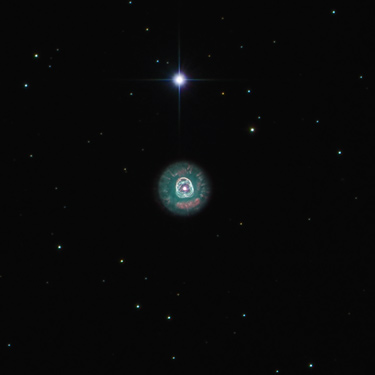
Clic here for 200% size 1500x1500 (142 kB)
Clic here for 60% size 2327x1543 (430 kB)
About this Image |
|
|
This stellar relic, first spied by William Herschel in 1787, is nicknamed the "Eskimo" Nebula (NGC 2392).
When viewed through ground-based telescopes, it resembles a face surrounded by a fur parka.
The "parka" in fact is a disk of material embellished with a ring of comet-shaped objects, with their tails streaming away from the central, dying star.
|
|
|
| Optics |
16" cassegrain in secondary focus at f/10 |
| Mount | MK-100 GEM |
| Camera | SBIG STL-11000M at -20C, internal filter wheel |
| Filters | Astronomik LRGB |
| Date | Feb 19-25, 2008. |
| Location | Wildon/Austria |
| Sky Conditions | mag 5 sky, 1.3-1.5" raw FWHM for center frames |
| Exposure |
center exposures: L: 30x60 sec, R:G:B = 960:600:960 sec (12o sec sub-exposures)
full frame: L:R:G:B = 60:120:80:120 min (20 min sub-exposures) |
| Processing |
Image aquisition in Maxim DL 4.6; Preprocessing and deconvolution in CCDStack;
wavelet filtering for center frames; further processing in Photoshop CS3; |